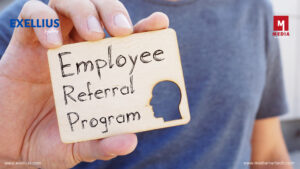
Estimated reading time: 4 minutes
A first responder is a person with specialized training who is the first to arrive and provide assistance at the scene of an emergency. Often when we think of first responders, we think of law enforcement, paramedics, and firefighters.
Recently, Ontario, Canada updated its Occupational Health and Safety Act (OSHA) standards to mandate that certain employers equip their offices with naloxone kits. This medication, which is known by the brand name Narcan, can be used to save the life of a person experiencing an opioid overdose. According to Ontario’s public health website, they have seen a steady increase in opioid-related incidents over the past decade.
This isn’t a situation unique to Canada. In the United States, more than 85,000 people died from a drug-related overdose in the one-year span from August 2019 – August 2020. In a brief from the American Medical Association (AMA), they also suggest installing a naloxone rescue station at worksites.
These two articles made me wonder, how many organizations have some sort of onsite first responder team? And are employees who are a part of this team receiving the education and training they need? Of course, I’m not suggesting that workplace response teams replace outside experts like paramedics or medical technicians. But this could be a moment for organizations to consider their workplace emergency plans.
Talk with your legal and risk management teams. Before doing anything, organizations need to talk with their legal and risk departments about creating a first responder team. Get their insights. Companies need to know what they are legally obligated to do when it comes to providing emergency response. Then they can decide the purpose and scope of their response team.
Check out existing resources. The U.S. Occupational Safety and Health Administration has publications for employers to get you started. For instance, there’s one on the “Fundamentals of a Workplace First-Aid Program” and another on “Planning and Responding to Workplace Emergencies”. Organizations might need to make some adjustments based on their industry and location, but documents like these can offer some good initial information.
Discuss who might be on the team. In my experience, I’ve never been forced or mandated to be on an emergency response team based on my job title. Organizations will want to discuss how many individuals will be on the response team and how they will be selected. It might also be necessary to discuss with response team members the responsibilities and expectations that come with the role so they can opt out if they choose.
Get management buy-in. Everyone is going to have to buy-into this program because when there’s an emergency…there’s an emergency. A manager will not have the option of saying, “Sorry, but Leonard is working on a project and I’m short staffed, so we can’t help you with that emergency.” This could also prompt a conversation about having a few extra people on the response team in case of vacations and leaves.
Give people the training they need! I cannot emphasize this enough. Not only initial training but refresher training. It’s possible that the organization will go months or years without a major incident. (That’s a good thing.) But when there’s an emergency, people should be ready to respond and feel like they know what they’re doing.
Hopefully, organizations create workplace first responder teams and never have to use them because they never have an incident. But I’m not sure that’s practical thinking. The time to think about emergency response is before you have an emergency.
Oh, and P.S. In my experience of being on response teams, one thing we always did that was incredibly valuable was debrief after every incident. Even if it was a false alarm. We asked ourselves, “What did we do well?” and “What could we do differently next time?” If you’re not debriefing, consider adding it to your emergency protocols.
Image captured by Sharlyn Lauby while exploring the streets of Atlanta, GA
The post Creating a Workplace First Responder Team appeared first on hr bartender.








